Scarlet Ibises in Trinidad's Caroni Swamp
|
Almost all of the Caroni Swamp ibises feed in neighboring Venezuela, some 11 miles away. However, there are a few who stay closer to home. Like flamingos and roseate spoonbills, the diet of the scarlet ibises gives them their rich color. If they stop eating their favorite crabs, then they lose their color. People from all over the world come to the swamp to see the flocks of scarlet ibises returning home. |
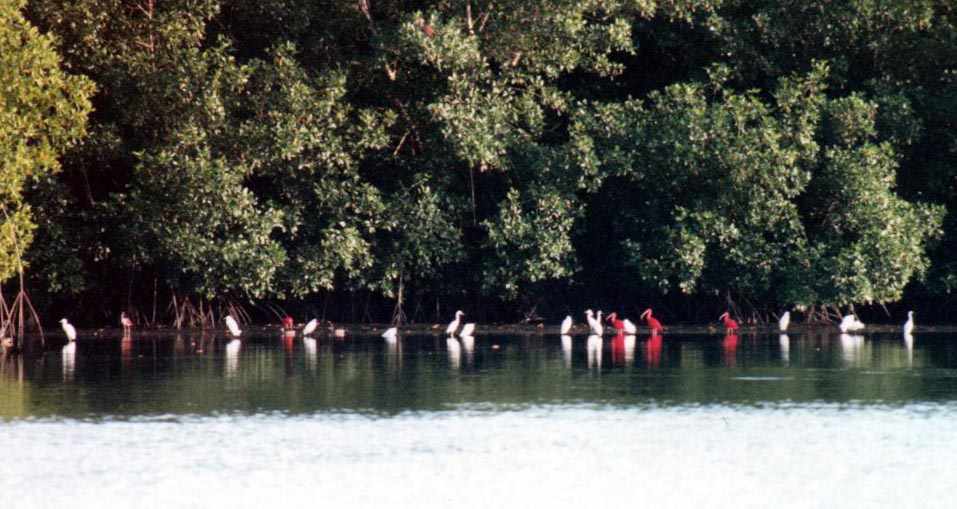
|
|
And here's the extraordinary event which I made so much effort to see. What sight could possibly be more spectacular than this? |
 |
|
Well, I suppose that groups of scarlet ibises flying together might be thought of as more spectacular... |
 |
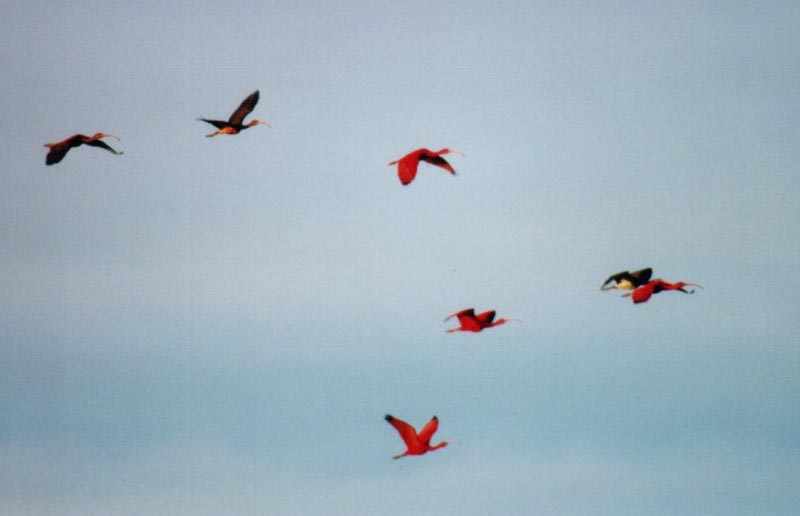 |
|
Some people might even consider closeups to be more spectacular. |
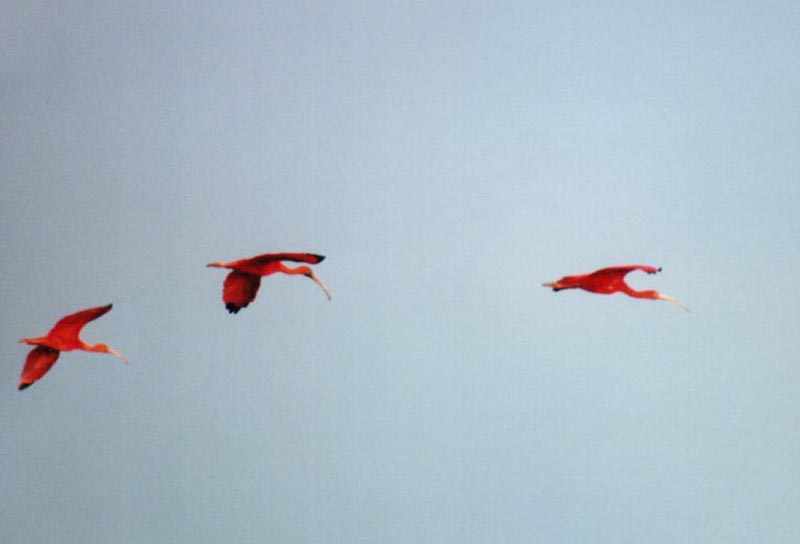 |
|
The dull-colored birds are adolescents, which don't develop their full adult color until about three years of age. |
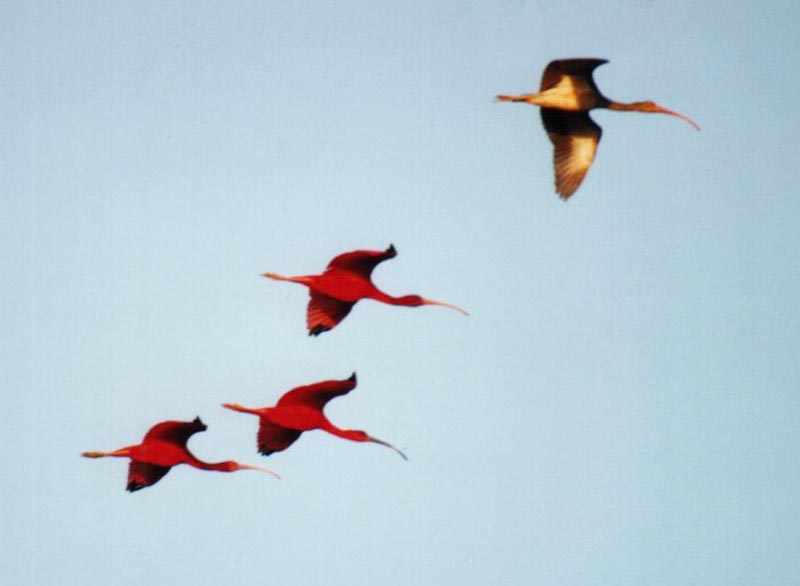 |
|
Here's the destination for the ibises, a single mangrove tree 500 or 600 feet away from where our boats were anchored. |
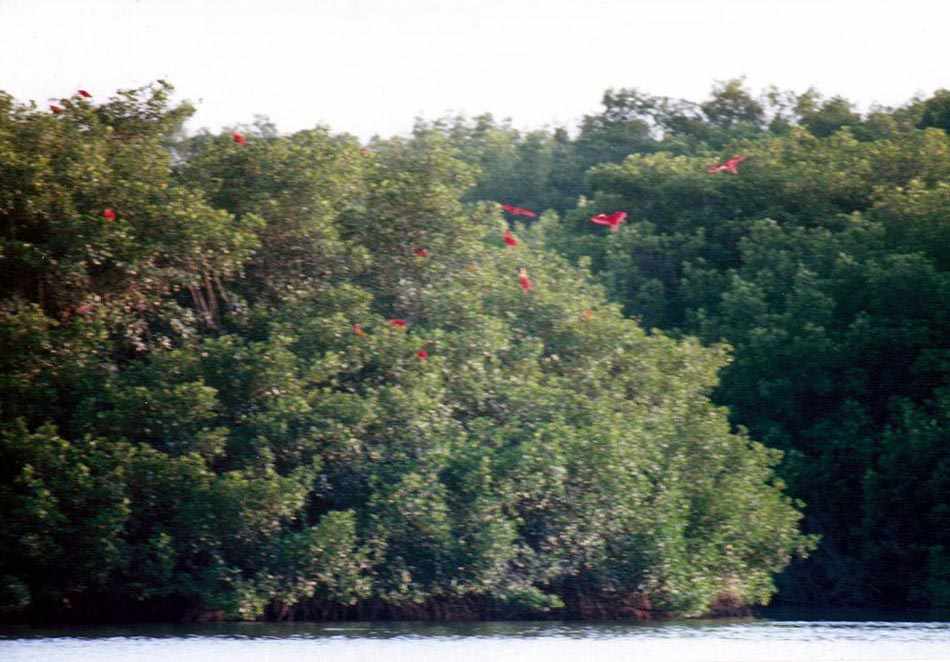 |
|
I took these photos with fast ASA 800 film, and a 500mm focal length lens with an f5.6 aperture mounted on a tripod which I was using as a monopod. |
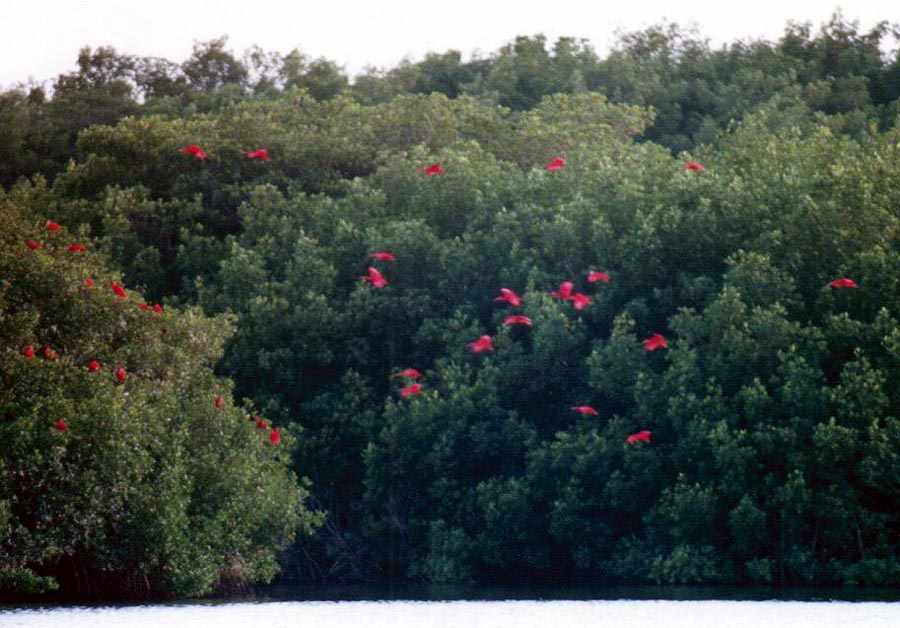 |
|
If you don't have a fast telephoto lens then you better leave your camera at home and just take a pair of binoculars! |
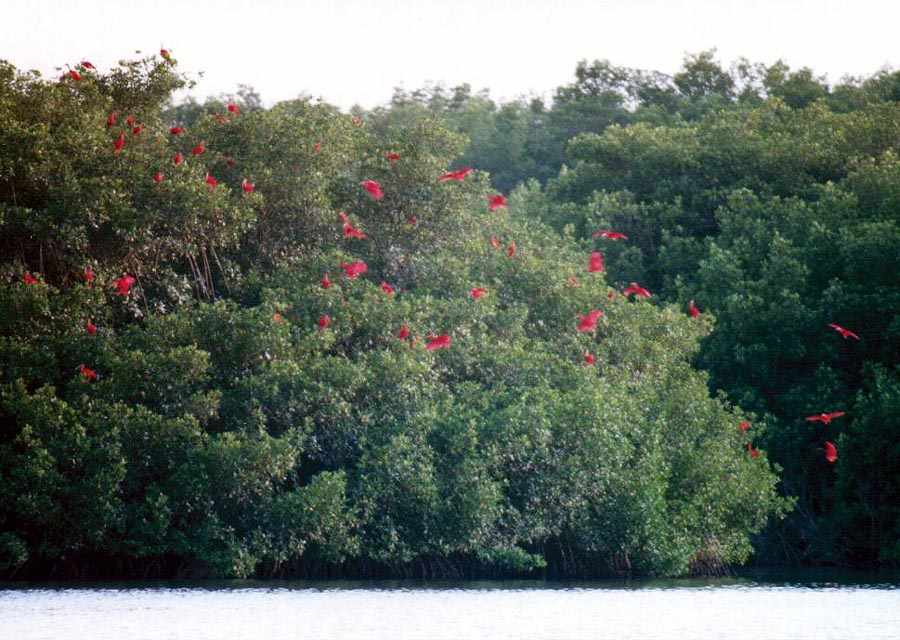 |
|
Startin' to look like a Christmas Tree! |
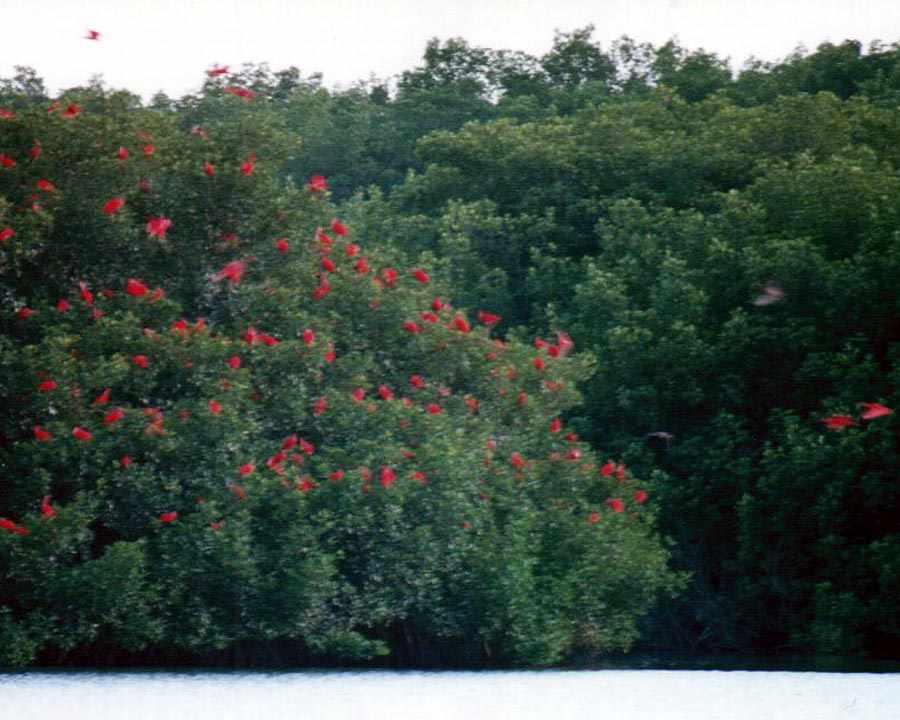 |
|
The evening rush hour might have started slow, but the light falls off quick in the tropics, and even these birdbrains know that if they don't hurry then they'll be flying around in the dark. |
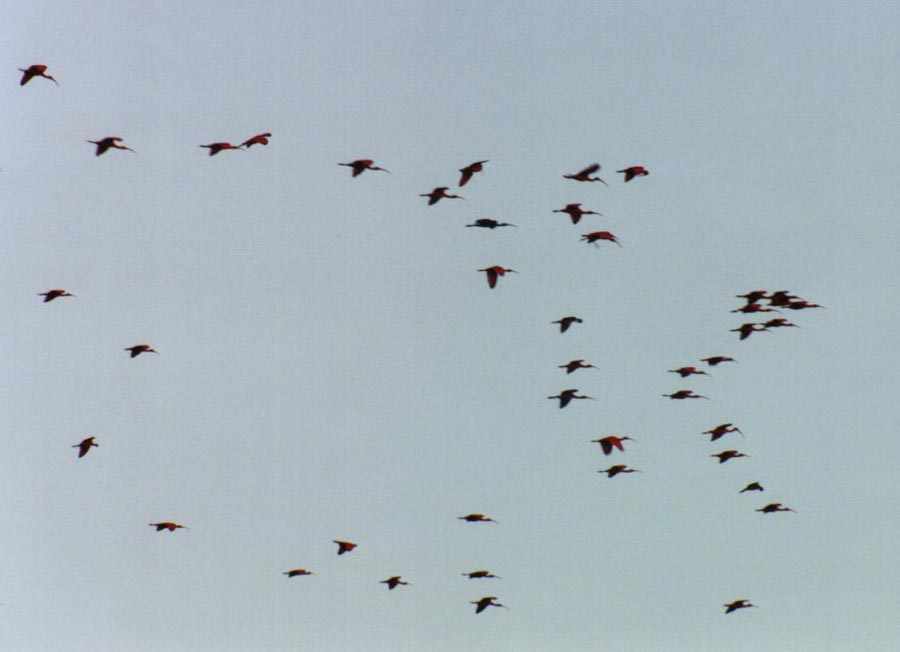 |
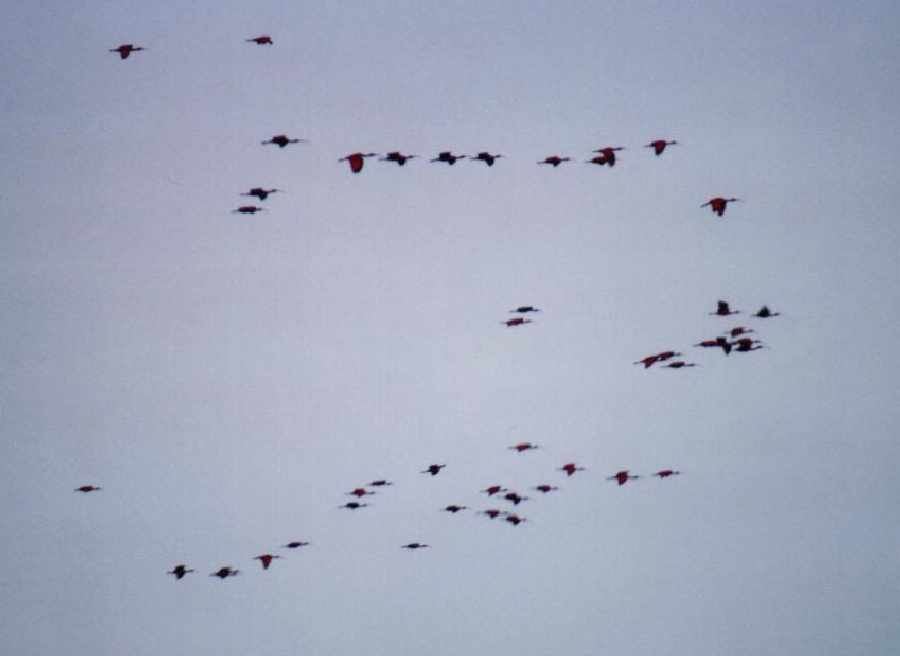 |
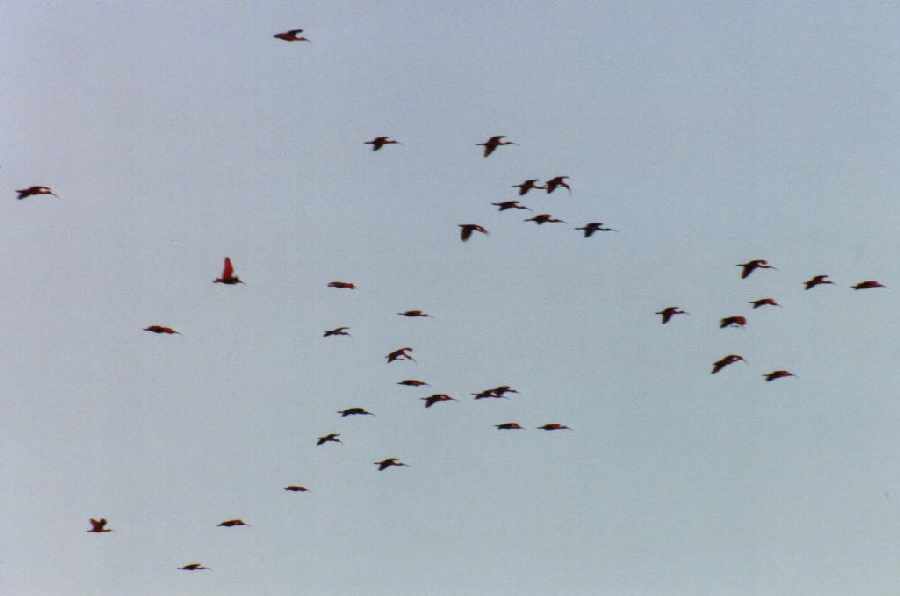 |
|
Wave after wave arrives, all heading for the same tree... |
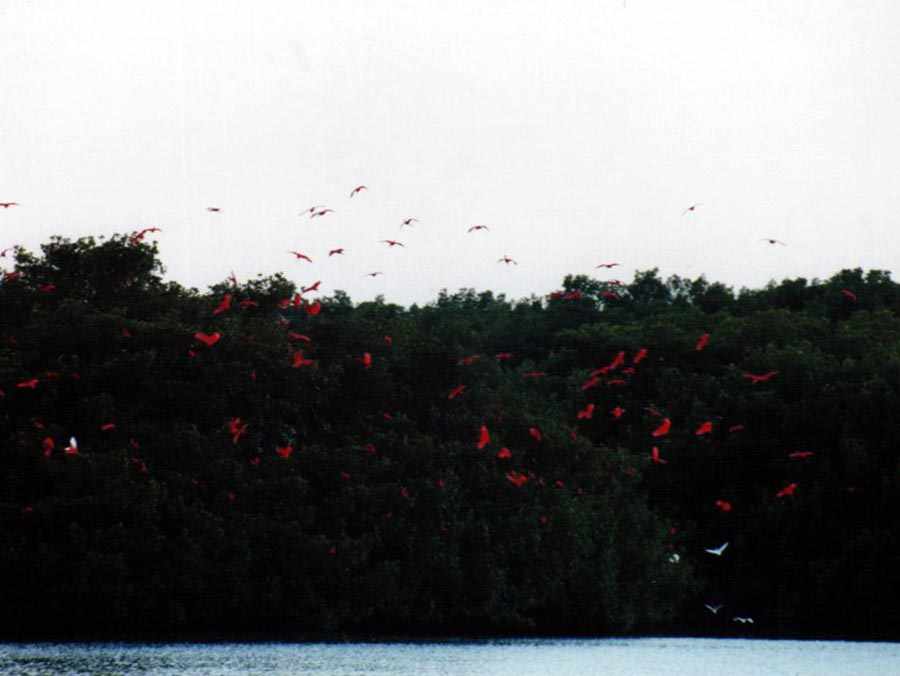 |
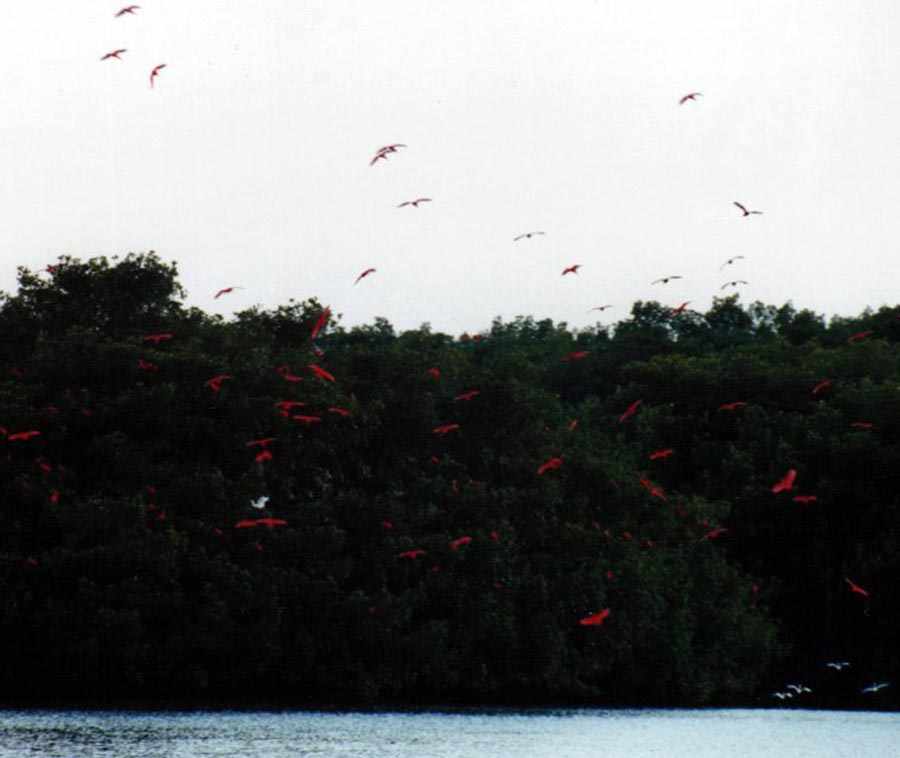 |
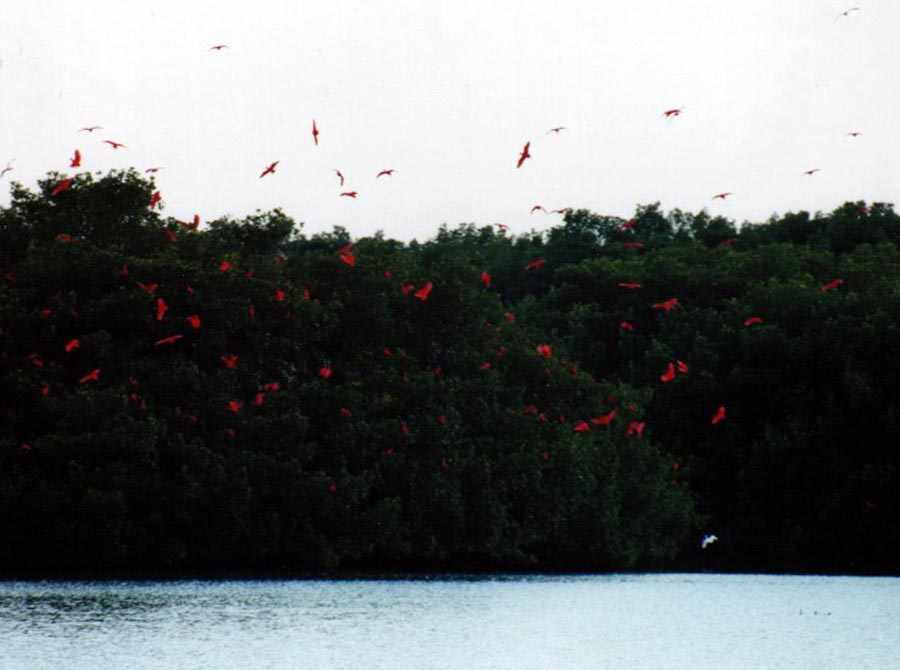 |
|
The final stragglers glide in, and even in the gloom the ibises still glow like little lanterns. |
 |